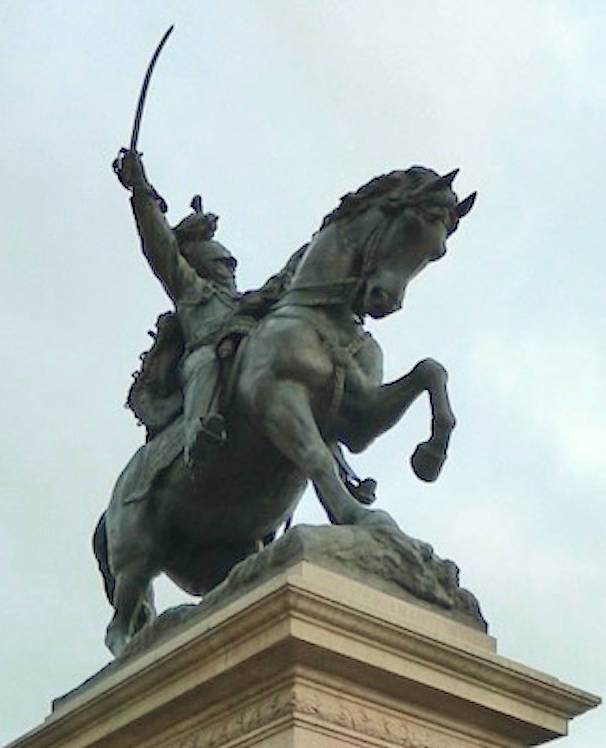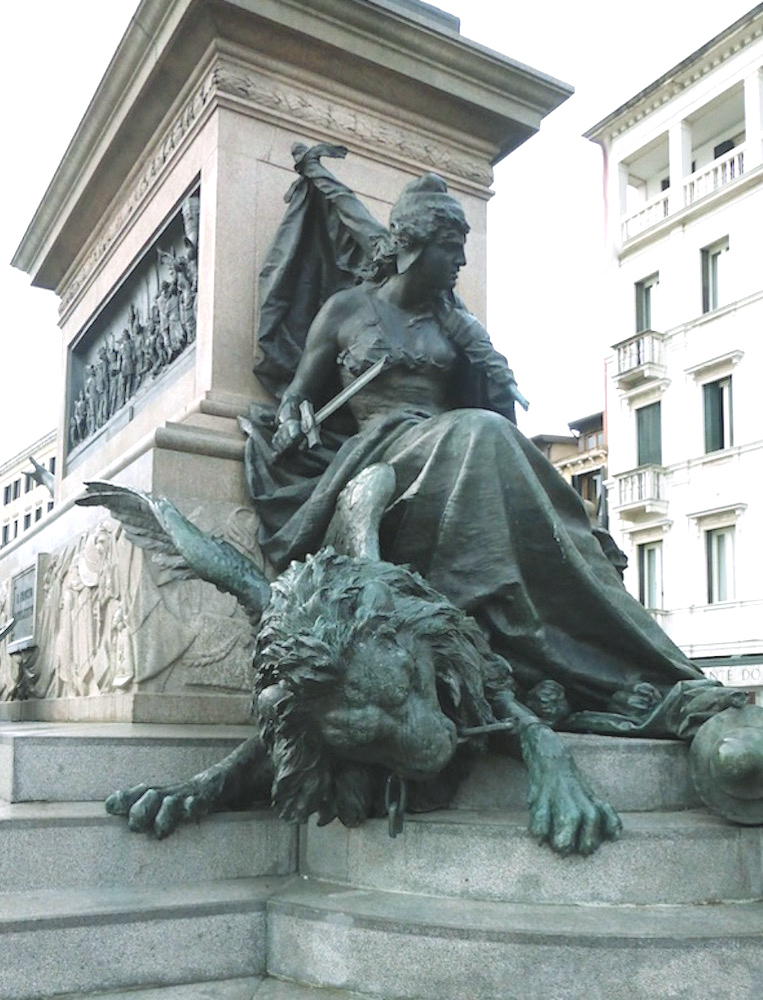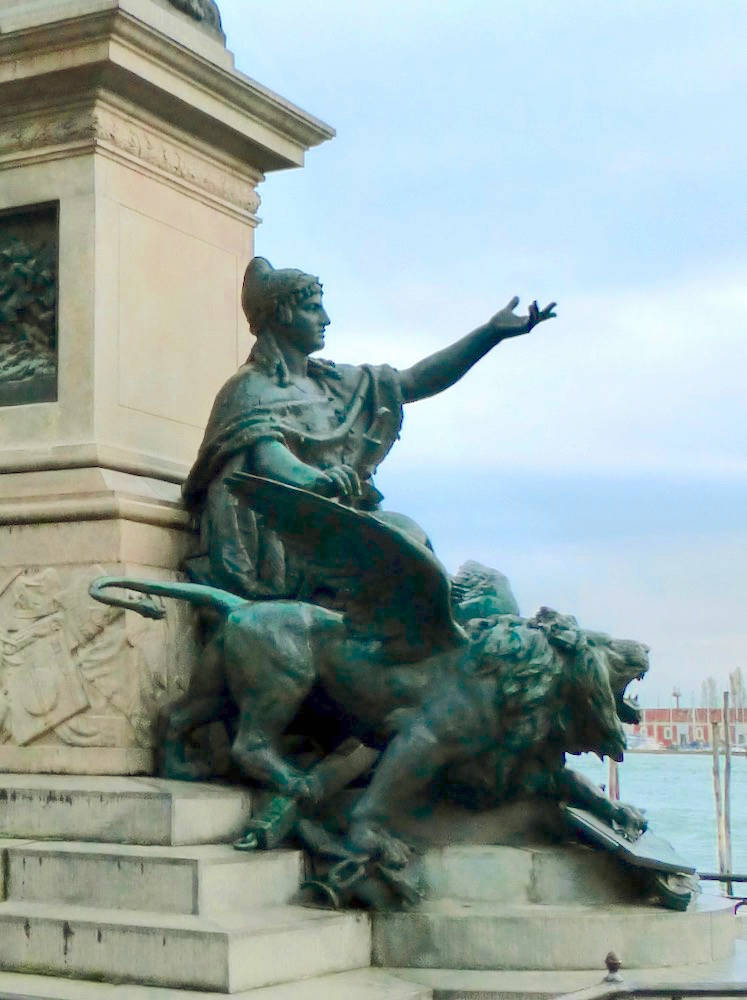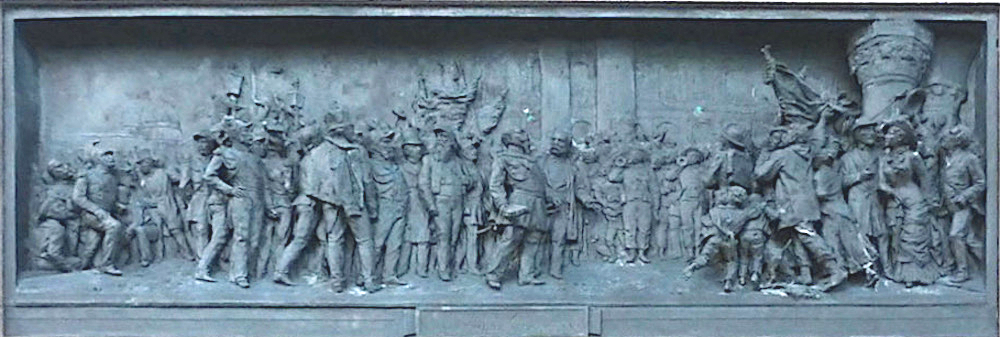Click on images to enlarge them.


Monument to Victor Emmanuel II. Sculptor, Ettore Ferrari (1845-1929). 1887. The monument stands prominently on the Riva degli Schiavoni, halfway between St Mark's Square and the Arsenale.
The king is shown as a victor, flourishing his sword on a fiery charger. But, as Margaret Plant says, "it is the figures of Venezia that dominate and energise the sculpture." Plant continues, "On the one side is the enchained Venice with the broken standard of St Mark and her lion sleeping on the steps; on the other, Venice is in command again, with the lion with wings aloft, both freed from Austrian chains. The public homage to Venetian resistance and unification was in place" (160). This is largely true. However, the lion is never asleep. Even when it appears to be slumped and passive, it is definitely awake, gripping the edge of the steps and gnawing frantically at its chains.



The bas-relief shows Vittorio Emanuele II entering Venice in triumph. "The new Kingdom of Italy fought Austria as the ally of Prussia in 1866, and so won Venetia" (Beales and Biagini 1). It was the culmination of the Risorgimento for Venice.
More of Ruskin's Venice
- St. Mark’s Cathedral
- The Palazzo Ducale, Venice
- The Scuola de San Rocco
- On the Grand Canal
- Leaving the Grand Canal
- On the way to Venice from the mainland
- Venice: Details and Corners
Photographs 2016. [You may use these images without prior permission for any scholarly or educational purpose as long as you (1) credit the photographer and (2) link your document to this URL in a web document or cite the Victorian Web in a print one.]
Bibliography
Beales, Derek, and Eugenio F. Biagini. The Risorgimento and the Unification of Italy. London: Routledge,, 2013.
Ruskin, John. The Works. Ed. E. T. Cook and Alexander Wedderburn. “The Library Edition.” 39 vols. London: George Allen, 1903-1912.
Plant, Margaret. Venice: Fragile City, 1797-1997. New Haven and London: Yale University Press, 2002.
�
Last Modified 31 March 2020